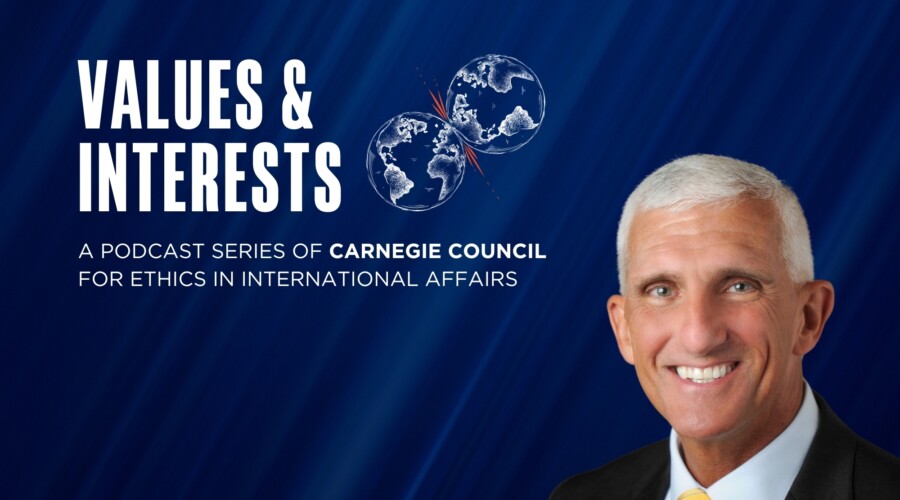How far along are we in supplying the world's poor with water? 147 heads of state and 189 nations committed themselves in 2000 to the United Nations Millennium Development Goals, aimed at overcoming the effects of extreme poverty by 2015. One of the goals is to reduce by half the proportion of people without sustainable access to safe drinking water and basic sanitation. Currently, about 1.2 billion people live under such conditions.
According to the World Health Organization, the MDG target implies a commitment to raise the global drinking water coverage to 88.5 percent in 2015. During 1990–2002 (the period for which data are available), global coverage rose by 5 percent, from 77 percent to 83 percent, improving the lives of almost 1 billion people. But meeting the target for sub-Saharan Africa continues to prove difficult.
As for basic sanitation, by 2002, about 2.6 billion people—half the developing world—lacked even a simple latrine, leading to the annual deaths of 1.6 million people from diarrheal diseases, mostly children under five. The WHO says that in order to halve the proportion of people without improved sanitation, global coverage needs to grow to 75 percent by 2015, from a starting point of 49 percent in 1990. However, if the 1990–2002 trend continues, the world will miss the sanitation target by more than half a billion people. In other words, close to 2.4 billion people will be without improved sanitation in 2015. At current rates of progress, an extra ten million children will die by the time the MDG target is finally reached, says UK charity WaterAid.
So what is to be done? According to WaterAid in its Getting to Boiling Point report, there is no one-size-fits-all solution.
Both the European Union's Water Initiative and the African Ministers' Council on Water agree with WaterAid that each country should work out its individual plan, which can vary depending on factors ranging from monsoons and naturally occurring arsenic in Bangladesh, to the lack of clarity about the roles of different ministries in Zambia.
For many countries, just keeping pace with providing food for growing populations proves a challenge. In India, for example, while there has been a 76 percent increase in the rural sanitation budget, the emphasis remains on agricultural provision rather than drinking water. Delhi, the capital, continues to operate an unbelievably inefficient domestic water supply service, with the World Bank noting that there is no political will for reforms. NGOs and the communist party even stepped in to block plans for a World Bank–funded pilot project in 2005 to improve water supplies and plug leakages.
"The real issues got lost in politics and ideology," said A. K. Bhattacharya, managing editor of Business Standard. The wealthy areas of the city, populated by politicians and bureaucrats, are awash with domestic water supplies—but many districts either go without or must rely on expensive private tanker suppliers. "There is no water scarcity in Delhi, just inefficient management of water resources," said Saurabh Chugh, a water expert with The Energy Research Institute in Delhi.
The Bill and Melinda Gates Foundation has been exploring the best way to move into structural financing of water, sanitation, and hygiene. In 2006, Holland's International Water and Sanitation Centre, together with Cranfield University and Aquaconsult in the UK, produced a study for the foundation which found that while there are no silver bullets some small pilot projects are worth expanding. It noted that success often depended on the willingness of NGOs to act with others, such as local governments and local utilities, as well as linking up with universities to develop learning alliances, particularly in the sanitation field.
Public utilities operate in a political arena with laws that often give them insufficient independence, particularly in relation to tariff setting and connection fees. The larger utilities may obtain support from consultant firms from industrialized countries, with good technical and organizational knowledge, but less understanding of, for example, slum sanitation services and slum inhabitants.
Finding the cash for improving infrastructure in small towns and villages can be a problem. Politicians are often unwilling to anger voters by raising tariffs. Yet clear changes have occurred in financing, with a move toward users paying a larger share, at least covering operation and maintenance costs, because earlier grant-based interventions proved unsustainable. However, the Gates study found that often mere lip service was paid to the role of poverty and gender inequality, which is unfortunate because progress on both issues contributes to more sustained service delivery and higher impact.
A study by the UK's Department for International Development found that despite the general acceptance of the principles of cost recovery, most countries still do not implement it. Tariffs are often set too low to cover the recurrent costs of operation and minor maintenance. The study also noted that concerns over commercial risk in the sector discourage private participation and limit access to commercial finance and capital markets in many developing and emerging countries. International private water companies have also shied away from investing in developing countries because of reputational risks resulting from negative campaigns by NGOs.
Several large water concessions in Argentina, Bolivia, and Southeast Asia collapsed because insufficient attention had been paid to the political and currency risk, among a number of factors. One of the problems is that the need for help from the private sector is most pressing just where governments are weakest.
There have been some successes supported by the UK's Water and Sanitation for the Urban Poor, such as a small partnership in Tanzania which includes the community as one of the partners, and a larger model between four NGOs, three business partners, and one university. The concept of successful partnerships has also been extensively explored, researched, and documented by an international cross-sector learning network called Building Partnerships for Water and Sanitation, which focuses on poor communities.
However, the latest Global Environment Outlook from the United Nations warns that by 2025, if present trends continue, "1.8 billion people will be living in countries or regions with absolute water scarcity," with the main culprit being climate change. The report argues that the future will be determined largely by the decisions individuals and society make now. "Our common future depends on our actions today, not tomorrow or sometime in the future," the report cautions.
While the Millennium Development Goals might seem impossible to achieve, the cost of inaction greatly exceeds the cost of action. Local efforts around the world demonstrate the potential for change.




